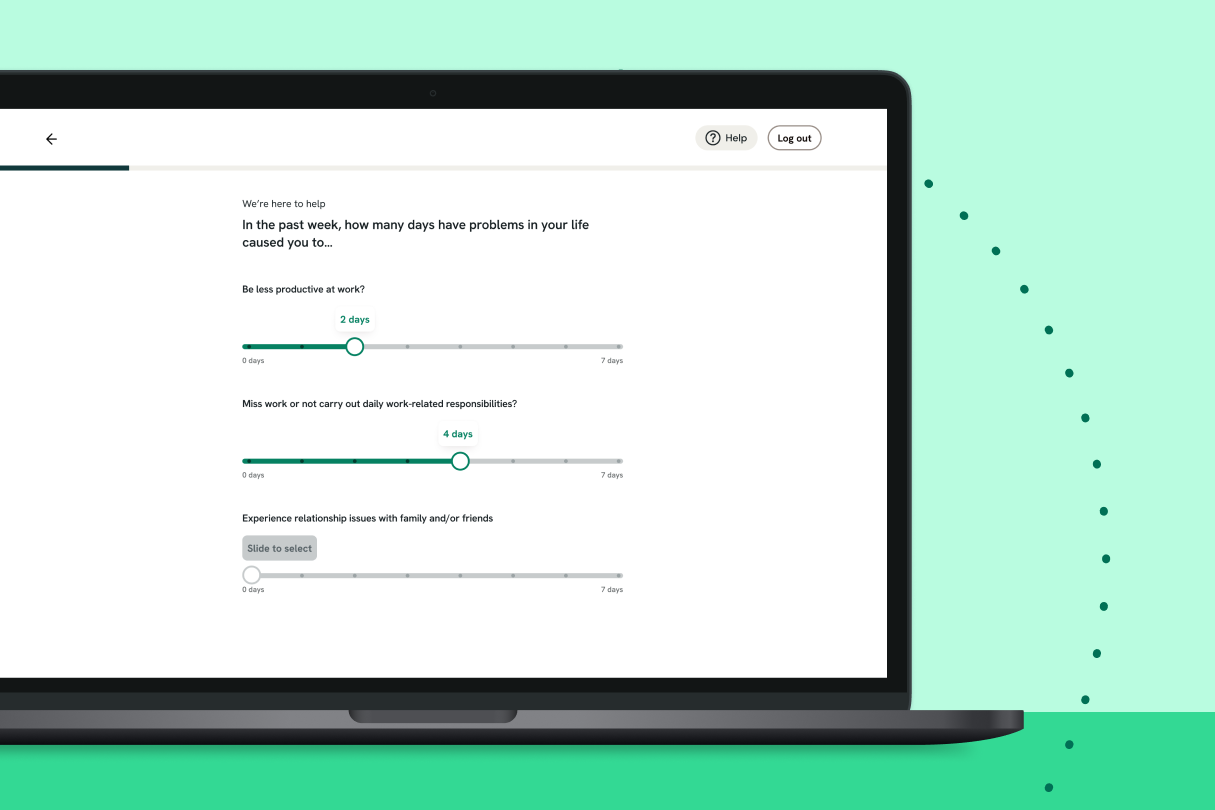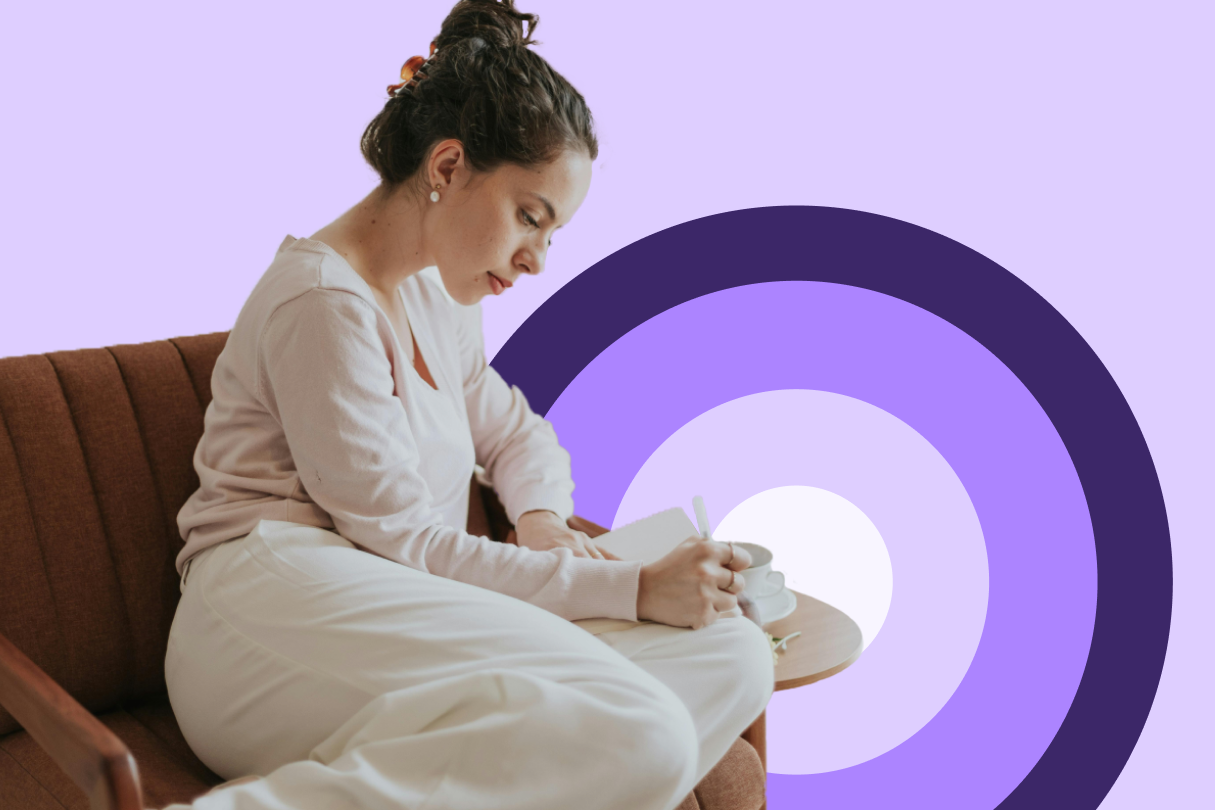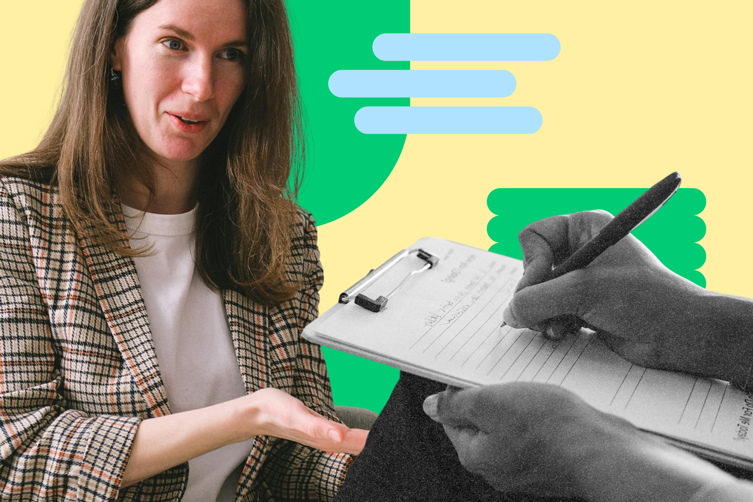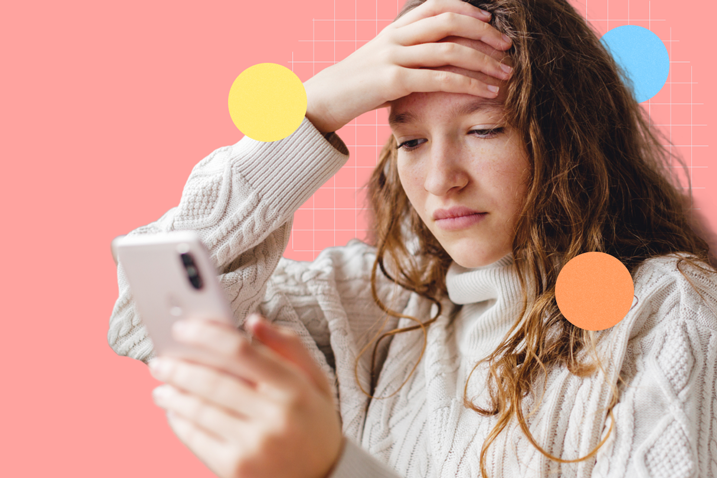Anxiety can feel like a fingerprint, no two experiences look exactly the same. Yet one worry people share is the fear that relentless, intrusive thoughts or racing-heart episodes are simply "the new normal."
Think of this guide as your anxiety decoder guide, transforming that vague sense of "something's wrong with me" into crystal-clear insights. While 60-80% of people who complete CBT for anxiety are in remission a year later (yes, those are better odds than most medical treatments), the real magic happens when you stop guessing and start knowing exactly what you're dealing with. We're here to help you draw the line between normal stress and a treatable anxiety disorder, because once you can name it, you can finally tame it.
What is an Anxiety Disorder?
From a clinical perspective, an anxiety disorder is a mental health condition characterized by persistent feelings of worry, nervousness, or fear that are intense enough to interfere with daily activities. It's crucial to distinguish between normative, transient anxiety and a clinical anxiety disorder. The latter involves symptoms that are more intense, frequent, or long-lasting, causing significant distress and functional impairment.
Anxiety is not a monolithic condition. It encompasses several distinct disorders, each with specific diagnostic criteria. Understanding these classifications can help individuals better identify their specific challenges and seek the right signs of anxiety disorder treatment options.
Generalized Anxiety Disorder (GAD)
If you're living with GAD, you know that worry isn't just an occasional visitor, it's like having a constant companion that won't let you rest, even when everything in your life is actually going well. The worry feels endless and impossible to shut off, no matter how much you try to reason with yourself.
- The worry lasts for at least six months and shows up most days.
- It’s paired with physical symptoms like restlessness, muscle tension, fatigue, irritability, trouble sleeping, or difficulty focusing.
- Everyday anxiety fades once a problem is solved. With GAD, the worry simply shifts to the next thing.
Panic Disorder
Panic disorder can feel incredibly isolating and terrifying. Those sudden, intense panic attacks, those overwhelming waves of fear that peak within minutes, can make you feel like you're losing control or even dying.
- Symptoms can include heart palpitations, shortness of breath, dizziness, or chest pain, which can feel like a heart attack.
- Many people rush to the ER during their first episode because it feels so physical and alarming.
- Even between attacks, it’s common to worry about when the next one will happen or to start avoiding certain activities or places.
Roughly 2% of U.S. adults experience panic disorder each year.
Social Anxiety Disorder
Social anxiety is so much more than just being shy, it's that deep, gut-wrenching fear of being judged, embarrassed, or rejected that can make everyday interactions feel overwhelming.
- It can show up as rehearsing what you’ll say before a meeting, avoiding events altogether, or feeling your mind go blank when attention turns to you.
- Physical signs, like blushing, sweating, or a shaky voice, can make the fear even worse, creating a cycle of avoidance and isolation.
Around 7% of U.S. adults experience social anxiety each year, yet many never seek help because they think it’s just “part of their personality.”
Learning to navigate these conditions is a powerful step toward reclaiming control and building a calmer, more confident life.
How Is Anxiety Diagnosed?
A formal anxiety diagnosis is the first step toward getting better. A mental health specialist is best equipped to provide a definitive diagnosis and treatment plan.
To diagnose an anxiety disorder, a mental health provider will typically:
- Discuss your symptoms: They will want to understand your thoughts, feelings, and behaviors when you feel anxious.
- Explore your history: This includes your personal and family history of mental health conditions.
- Screen for related conditions: Anxiety often co-occurs with other issues like depression or substance use, which can make diagnosis more complex.
This traditional process can involve long waits and trial-and-error. At Spring Health, we use Precision Mental Healthcare to eliminate the guesswork. Our approach includes a quick, confidential online assessment that screens for over 12 common conditions, including various forms of anxiety. This allows us to pinpoint your needs and create a personalized care plan, connecting you with the right specialist from the start.
Recognizing the Signs and Symptoms of Anxiety
Anxiety manifests through a combination of psychological, physical, and behavioral symptoms. The clinical presentation of these symptoms can vary in severity and combination from person to person, requiring a personalized approach to diagnosis and treatment.
Psychological and Emotional Symptoms
The cognitive and affective components of anxiety are often the most distressing. A core objective of therapy is to challenge and reframe these maladaptive thought patterns. Common psychological symptoms include:
- Excessive and persistent worry or fear about a number of events or activities.
- Intrusive thoughts or obsessive concerns.
- Difficulty concentrating or a feeling that your mind goes blank.
- Irritability, agitation, or a pervasive sense of restlessness.
- A tendency toward "catastrophizing," or imagining worst-case scenarios.
- Pervasive negative self-talk and self-criticism.
Challenging these cognitive distortions is a foundational element of effective anxiety disorder symptoms and treatment.
Physical Symptoms
The physical symptomatology of anxiety is often a direct result of the "fight-or-flight" response, a physiological reaction involving the autonomic nervous system. Recognizing these physical cues is a critical first step in deploying strategies to manage an acute anxiety episode. Common physical manifestations include:
- Fatigue, which can often occur as a post-episode symptom following a panic attack.
- Increased heart rate or heart palpitations.
- Sweating, shaking, or trembling.
- Shortness of breath or a sensation of tightness in the chest.
- Nausea, dizziness, or gastrointestinal distress.
Understanding the connection between your mind and body is essential, as described in many personal accounts of addressing anxiety and panic attacks at work.
Behavioral Symptoms
Anxiety can significantly alter observable behaviors as individuals attempt to cope with or avoid distressing feelings. These behavioral changes are often key diagnostic indicators:
- Avoidance of situations, people, or places that are perceived as anxiety triggers (e.g., social gatherings, public speaking).
- Disruptions in sleep patterns, including difficulty initiating or maintaining sleep (insomnia).
- A heightened startle response.
- Outbursts of anger or frustration.
How Therapy Provides Effective Treatment for Anxiety
Therapy offers a structured, supportive, and confidential environment for individuals to explore the root causes of their anxiety and develop effective, evidence-based coping strategies. While many therapeutic approaches can help, Cognitive Behavioral Therapy (CBT) stands out as the most researched and widely used.
Below, we use CBT as a detailed example of how therapy can reduce anxiety symptoms, followed by a brief overview of other effective therapy approaches.
Cognitive Behavioral Therapy (CBT)
CBT is considered the gold standard in psychotherapy for anxiety disorders, supported by a vast body of empirical research. CBT operates on the principle that psychological problems are based, in part, on unhelpful ways of thinking and learned patterns of unhelpful behavior.
Core CBT techniques used to treat anxiety include:
Cognitive Restructuring
A systematic process of identifying, challenging, and reframing maladaptive or anxious thoughts to develop more balanced and realistic perspectives.
Cognitive Restructuring helps you become aware of the catastrophic thinking patterns that fuel anxiety. By learning to question thoughts like "What if I fail?" or "Something terrible will happen," you develop the ability to replace them with more realistic assessments like "This might be challenging, but I can handle it." Over time, this reduces the intensity and frequency of anxious thoughts.
Mindfulness
The practice of non-judgmental, present-moment awareness, which helps create psychological distance from anxious feelings.
Mindfulness creates space between you and your anxious thoughts. Instead of getting caught up in "what if" scenarios about the future or ruminating about past events, mindfulness trains your brain to stay grounded in the present moment. This breaks the cycle of worry and helps you observe anxious thoughts without automatically believing them or letting them control your actions.
Grounding Techniques
These provide immediate relief during acute anxiety or panic episodes. When anxiety triggers your body's fight-or-flight response, grounding techniques activate your parasympathetic nervous system, signaling safety to your brain. By focusing on sensory experiences like feeling your feet on the ground or naming objects you can see, you interrupt the escalation of panic and remind your body that you're safe in the present moment.
The beauty of these techniques is that they're practical tools you can use anywhere, anytime. While therapy provides guidance and support in mastering these skills, they become lifelong resources for managing anxiety, even after treatment ends.
Other Evidence-Based Therapies for Anxiety
While CBT is one of the most researched approaches, there's no universal "one-size-fits-all" therapy.
Different people respond to different approaches, and finding the right fit is part of the journey. Beyond CBT, several other evidence-based therapies have proven effective in treating anxiety, including:
- Acceptance and Commitment Therapy (ACT): Focuses on accepting anxious thoughts rather than fighting them, while committing to actions aligned with personal values.
- Dialectical Behavior Therapy (DBT): Originally developed for emotional dysregulation, DBT teaches mindfulness, distress tolerance, and emotional regulation skills.
- Exposure Therapy: A subset of CBT, this approach gradually exposes individuals to feared situations to reduce avoidance and desensitize anxiety triggers.
- Mindfulness-Based Therapies: Incorporates meditation and breathing techniques to help individuals observe anxious thoughts without judgment.
Each of these approaches offers unique tools, and the right fit depends on individual needs and preferences.
Taking the First Step: How to Find the Right Help
Acknowledging the need for help is a sign of strength, but navigating the mental healthcare system can be a significant barrier. The national average wait time for a new therapy appointment is 25 days, according to a 2022 survey by the American Psychological Association.
Spring Health was founded to eliminate these barriers. Our model is designed for rapid access to high-quality mental healthcare. With Spring Health, clients benefit from:
- Fast access to care: Our members can typically schedule a therapy appointment in less than two days.
- A personalized care plan: Our clinically validated assessment identifies your unique needs to create a tailored treatment plan that may include therapy, coaching, or self-guided exercises.
Our systematic approach ensures you receive the right care, right away, making it easier to get the support you need for your anxiety disorder symptoms and treatment.
Anxiety Treatment Works: Take the First Step Toward Recovery
The evidence is clear: anxiety is a real, challenging, and highly treatable condition. Recovery starts with a simple but powerful step: noticing what’s happening, how anxiety shows up in your thoughts, your body, and your day-to-day life. From there, evidence-based interventions like therapy, particularly CBT, provide the validated tools needed to systematically manage anxiety and improve your quality of life.
If you are struggling, remember that there is a path forward. We encourage you to reject the hypothesis that you must manage this alone. Reach out and seek the expert support you deserve. To learn how Spring Health provides accessible, personalized, and effective mental healthcare, explore our services today.
.png)
Melanie Glassey, LPC, and art therapist at Spring Health who specializes in working with children, teens, and young adults. She integrates creative arts therapy with evidence-based clinical approaches to help clients build emotional awareness, manage anxiety, and strengthen emotion regulation skills. Melanie has expertise supporting clients through life transitions, identity exploration, and pregnancy or postpartum experiences, including those who identify as neurodiverse. Her approach fosters a safe, engaging, and growth-oriented space where individuals can explore healing and resilience through both traditional and expressive therapies.

Jennifer Goss is a licensed therapist at Spring Health specializing in trauma, grief, and anxiety in adolescents, young adults, individuals, and couples. A certified trauma counselor, grief counselor, and child/adolescent anxiety professional, she integrates evidence-based approaches with a strengths-based perspective to foster healing and resilience. Jennifer is recognized for creating a safe, nonjudgmental space that supports personal growth and accountability. Her clinical style emphasizes empowerment, compassion, and guiding clients toward renewed hope during life’s most difficult seasons.












-Preview%20Image.png)








